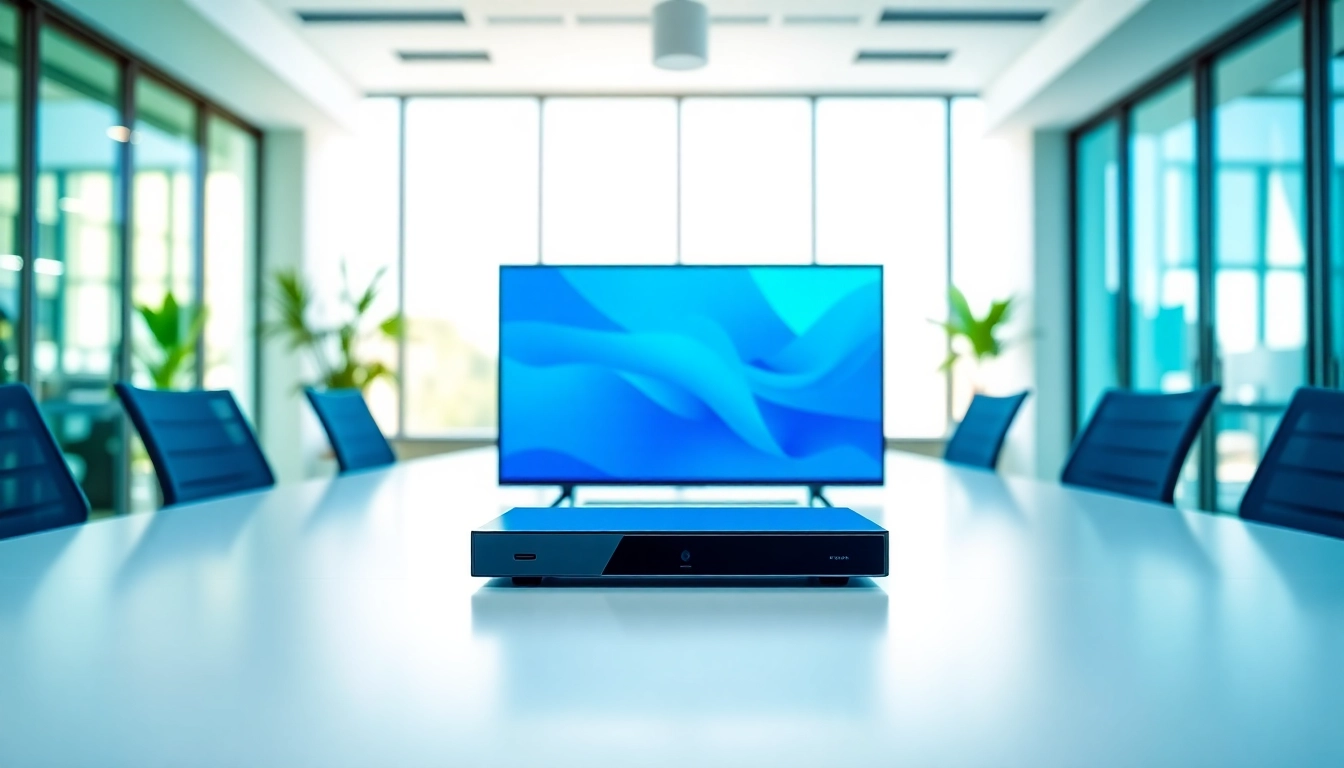Understanding Android Digital Signage Player Technology
What is an Android Digital Signage Player?
An Android digital signage player is a media device that allows users to display content on digital screens using the Android operating system. It often takes the form of a small box, stick, or tablet and connects to monitors, televisions, or digital displays to render various multimedia content, including videos, images, and text. This technology leverages the flexibility and widespread adoption of Android, making it a convenient choice for businesses seeking to manage visual communications effectively. With the potential to transform any screen into an engaging platform, the Android digital signage player serves as a versatile solution that accommodates a variety of display needs across numerous industries.
How Does It Work?
The operation of an Android digital signage player relies on several key components and functionalities. First, content management software is used to create and manage the media that will be displayed. This software can be cloud-based or installed directly on the device. The player itself connects to the internet through Wi-Fi or Ethernet, allowing it to retrieve and update content remotely.
Once set up, the device processes the media through its internal CPU and GPU, ensuring smooth playback on the connected display. Users can typically customize content schedules, playlists, and layouts via a user-friendly interface, enabling quick adjustments as needed. Various apps available on the Google Play Store can enhance the functionality of the player, offering additional features such as analytics, templates, and integrations with social media or other platforms.
Benefits of Using Android Digital Signage Player
Employing an Android digital signage player offers myriad benefits for businesses:
- Cost-Effectiveness: Many Android devices, such as sticks and tablets, are relatively affordable compared to traditional digital signage hardware solutions. This lowers the initial investment barrier for businesses.
- Ease of Use: With intuitive interfaces and access to a plethora of apps, setting up and managing content on Android digital signage players is straightforward, even for those with minimal technical knowledge.
- Versatility: Android players can display a wide range of multimedia formats, making them suitable for diverse applications, from advertising to informational displays.
- Scalability: Organizations can easily expand their digital signage networks by adding more players without the need for extensive infrastructural changes.
- Remote Management: Many digital signage solutions allow for remote access, enabling users to update and monitor content from anywhere, enhancing operational efficiency.
Key Features to Look for in an Android Digital Signage Player
Content Management Capabilities
One of the most critical aspects of an Android digital signage player is its content management capabilities. Users should look for systems that offer robust tools for designing, scheduling, and deploying content easily. Features such as drag-and-drop functionality for layout creation, customizable templates, and the ability to incorporate varying media types—such as images, videos, and dynamic content—are essential for maximizing engagement.
Compatibility with Various Displays
An effective Android digital signage player must be compatible with a wide range of display types, including televisions, monitors, and projectors. This capability ensures that businesses can utilize existing hardware and invest in displays that meet their specific needs. Furthermore, aspects such as resolution support (often up to 4K) and the ability to operate in both portrait and landscape modes allow for flexibility in various environments and applications.
Network Connectivity Options
Seamless connectivity is vital for any digital signage solution. Look for players that provide multiple networking options, including Wi-Fi, Ethernet, and cellular connectivity. This versatility allows for reliable communication between the signage player and the content management system, ensuring that updates can be sent in real-time without disruption.
How to Set Up Your Android Digital Signage Player
Step-by-Step Installation Guide
Setting up an Android digital signage player typically involves several straightforward steps:
- Unbox and Connect: Start by unboxing the device and connecting it to the display monitor via HDMI. Ensure the device is powered by plugging it into an electrical outlet.
- Network Configuration: Choose a network connection method. For Wi-Fi, navigate to the settings menu and connect to your local network. For wired connections, plug the Ethernet cable into the designated port on the device.
- Install Required Apps: Use the Google Play Store to download essential applications, including your preferred content management software and any additional apps needed for your digital signage strategy.
- Create an Account: Register for an account with the content management platform to access design tools and develop content remotely.
- Upload Content: Begin designing your digital signage by uploading images, videos, and promotional materials, setting up playlists, and arranging content schedules as preferred.
- Publish and Test: Once content is created, publish it to the screen and review playback to ensure everything is functioning as designed.
Configuring Settings for Optimal Performance
To ensure your Android digital signage player operates smoothly, consider adjusting the following settings:
- Display Settings: Optimize the display resolution and orientation settings to match the specifications of your monitor.
- Power Management: Configure the player to enter sleep mode during non-business hours to save energy and extend the lifespan of the device.
- Network Settings: Regularly check the network connection to avoid disruptions in content delivery. If using Wi-Fi, positioning the player closer to the router may enhance connectivity.
Common Troubleshooting Tips
In the event of issues arising during setup or operation, consider these troubleshooting tips:
- No Display: Ensure all connections are secure, and confirm that the monitor is powered on and set to the correct input source.
- Poor Connectivity: Check network settings and consider switching to a wired connection if Wi-Fi is unstable.
- Content Not Updating: Verify that the device is connected to the internet and that the content management system is functioning correctly.
Sample Use Cases of Android Digital Signage Player
Retail and Advertising Applications
In retail environments, the Android digital signage player can assist in displaying promotional content, advertisements, and product information. These players can be positioned strategically throughout a store to guide customers, present special offers, and highlight new arrivals. Utilizing targeted content based on audience demographics, retailers can maximize engagement and drive sales effectively.
Corporate Environments and Meetings
In corporate settings, digital signage players can enhance communication during meetings and conferences. Organizations can display agendas, schedules, and important announcements in real-time. Additionally, they can showcase employee achievements, company news, and other vital information that contributes to a cohesive workplace environment.
Educational Institutions
Educational institutions leverage Android digital signage players to disseminate information effectively across campuses. They can be used for displaying class schedules, important announcements, event promotions, and even educational videos in common areas. Moreover, engaging content can help foster a sense of community among students and staff alike.
Measuring the Impact of Your Android Digital Signage Player
Key Performance Indicators to Track
To gauge the effectiveness of an Android digital signage player, businesses should consider tracking key performance indicators (KPIs) such as:
- Audience Engagement: Monitor viewer interactions, including the amount of time spent watching content and response rates to calls to action.
- Content Reach: Evaluate how many displays show specific content and the frequency of updates to determine audience reach.
- Sales Metrics: Analyze sales data before and after implementing digital signage campaigns to assess any increases in revenue.
Feedback and Adjustments for Improvement
Gathering feedback on displayed content from employees and customers can provide valuable insights for future campaigns. Utilize surveys, customer feedback forms, and analytic tools to assess reception and adapt strategies accordingly. Continuous testing of content types, layouts, and schedules can further optimize performance and ensure relevance to audiences.
Long-Term Maintenance Strategies
To keep the Android digital signage player functioning optimally over time, consider instituting regular maintenance strategies, including:
- Software Updates: Keep the Android operating system and any associated apps updated to leverage new features and ensure security.
- Content Rotation: Regularly refresh and rotate content to maintain viewer interest and engagement.
- Performance Monitoring: Consistently review device performance and connectivity, making adjustments as appropriate for maximum efficacy.



